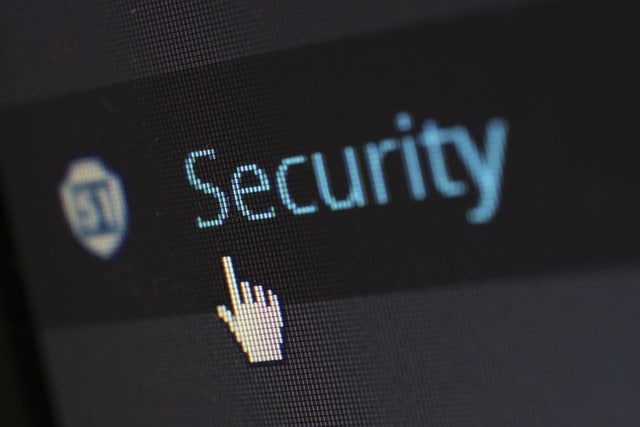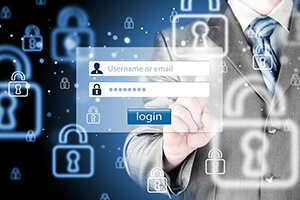Data protection is a crucial concern in today’s digital-driven educational landscape. As educational institutions increasingly rely on technology for teaching and learning, the need to safeguard valuable educational data becomes paramount.
This article delves into the significance of data protection in educational institutions, emphasizing three key areas: the types of educational data, data privacy regulations, and data protection measures.

A fundamental understanding of the various educational data types is essential for implementing effective protection strategies. These encompass student records, academic performance data, and personally identifiable information.
Moreover, educational institutions must ensure compliance with data privacy regulations, safeguarding the privacy rights of students, staff, and other stakeholders.
Lastly, robust data protection measures are crucial to prevent unauthorized access, loss, or misuse of educational data. By addressing these aspects, educational institutions can cultivate a secure environment that upholds trust and guarantees the confidentiality, integrity, and availability of educational data.
Importance of Data Protection
Data protection is a crucial aspect of safeguarding sensitive educational data. Educational institutions handle vast amounts of student data, including personal information and academic records. Ensuring student data security and maintaining educational data privacy are paramount to protect individuals’ rights and maintain trust within the educational ecosystem.
To address these concerns, educational institutions must comply with data privacy regulations, such as the Family Educational Rights and Privacy Act (FERPA) in the United States. FERPA sets guidelines for educational institutions regarding the collection, storage, and disclosure of student records. Institutions must establish robust data protection measures to achieve FERPA compliance.
Data protection measures include implementing secure data storage systems, such as encrypted databases, to prevent unauthorized access to student information. Regular data backups and disaster recovery plans also play a crucial role in safeguarding educational data. Additionally, institutions should establish access controls and authentication protocols to restrict data access to authorized personnel only.
Risks of Data Breaches
Educational institutions face significant risks of data breaches, given the sensitive nature of the information they handle and the increasing sophistication of cyber threats. These breaches can have severe consequences, including financial losses, reputational damage, and legal liabilities.
One of the main reasons educational institutions are vulnerable to data breaches is the vast amount of personal and sensitive information they collect and store. This includes student records, financial data, healthcare information, and intellectual property. This valuable data makes educational institutions attractive targets for cybercriminals who seek to exploit it for financial gain or other malicious purposes.
Moreover, the evolving nature of cyber threats poses a constant challenge to data security in educational institutions. Hackers and cybercriminals are continuously developing new techniques and technologies to breach networks and systems. This includes phishing attacks, ransomware, and social engineering tactics. Educational institutions must stay updated with the latest security measures and invest in robust cybersecurity systems to mitigate these risks.
Furthermore, the human factor also contributes to the risks of data breaches. Staff members and students may unknowingly engage in risky behaviors, such as clicking on malicious links or sharing sensitive information with unauthorized individuals. Therefore, educational institutions must prioritize training and awareness programs to educate individuals about cybersecurity best practices and foster a culture of data protection.
To effectively mitigate the risks of data breaches, educational institutions should implement comprehensive data protection strategies. This includes conducting regular risk assessments, implementing strong access controls and authentication mechanisms, encrypting sensitive data, and establishing incident response plans. Additionally, institutions should comply with relevant data privacy regulations and standards, such as the General Data Protection Regulation (GDPR) or the Family Educational Rights and Privacy Act (FERPA).

Legal Obligations for Educational Institutions
Ensuring compliance with data privacy regulations is a critical legal obligation for educational institutions. These regulations are designed to protect the personal information of students, staff, and other individuals associated with the institution. Failure to comply with these regulations can result in legal consequences, reputational damage, and financial penalties.
Educational institutions must be aware of the specific data privacy regulations that apply to them. In many countries, educational institutions are subject to general data protection laws, such as the European Union’s General Data Protection Regulation (GDPR). Additionally, there may be specific regulations that pertain to educational data, such as the Family Educational Rights and Privacy Act (FERPA) in the United States.
To emphasize the importance of complying with data privacy regulations, the following table provides a comparison of the consequences of non-compliance versus compliance:
| Non-Compliance | Compliance |
|---|---|
| Legal consequences | Protects personal information |
| Reputational damage | Builds trust with stakeholders |
| Financial penalties | Avoids fines and legal fees |
Educational institutions should establish comprehensive data protection measures, including policies and procedures, employee training, encryption, and regular audits. By fulfilling their legal obligations and protecting sensitive data, educational institutions can create a safe and secure environment for their students and staff.
Student Data Protection Best Practices
When it comes to student data protection, educational institutions should prioritize the implementation of a robust privacy policy.
This policy should outline how student data is collected, used, and stored, as well as the measures in place to protect it.
Additionally, educational institutions should focus on preventing data breaches by implementing stringent security measures, such as encryption, access controls, and regular data backups.
Privacy Policy Implementation
One best practice for protecting student data in educational institutions is the implementation of a comprehensive privacy policy. This policy serves as a guideline for how student data should be collected, stored, and used within the institution.
To ensure effective implementation, the following best practices should be considered:
- Clearly define the purpose of data collection and ensure that it aligns with educational objectives.
- Specify the types of data that will be collected and the methods used for collection to ensure transparency.
- Establish clear guidelines for data storage and access, including encryption and user authentication protocols.
Data Breach Prevention
What measures can educational institutions take to prevent data breaches and protect student data?
Data breach prevention is crucial in educational institutions to ensure the security and privacy of student data. To achieve this, institutions should implement a multi-layered approach that includes several best practices.
Firstly, conducting regular risk assessments can help identify vulnerabilities in the system and take appropriate protective measures.
Secondly, instituting strong access controls, such as unique usernames and complex passwords, can limit unauthorized access to student data.
Additionally, implementing encryption techniques can safeguard data in transit and at rest.
Regular staff training on data protection policies and procedures is also essential to raise awareness and ensure compliance.
Lastly, having a robust incident response plan in place can help mitigate the impact of a data breach and minimize potential damage.

Staff Data Protection Best Practices
Staff data protection practices in educational institutions play a crucial role in ensuring the privacy and security of sensitive information. To effectively protect staff data, educational institutions should implement the following best practices:
- Staff Training and Awareness: Provide regular training sessions to educate staff members about data protection policies, procedures, and best practices. This will help them understand their responsibilities and minimize the risk of data breaches.
- Access Control and Authentication: Implement a robust access control system that restricts access to staff data based on job roles and responsibilities. Use strong authentication methods, such as two-factor authentication, to verify the identity of staff members accessing sensitive information.
- Data Encryption: Encrypt staff data both at rest and in transit to prevent unauthorized access and ensure data confidentiality. Use strong encryption algorithms and secure protocols to protect data from potential threats.
Implementing Strong Passwords
When it comes to implementing strong passwords in educational institutions, there are several important points to consider.
First, password complexity requirements should be established to ensure that passwords are secure and difficult to guess.
Additionally, implementing two-factor authentication can provide an extra layer of security by requiring users to provide a second form of verification.
Lastly, educating users on the importance of strong passwords and best practices can help reinforce the need for password security.
Password Complexity Requirements
Educational institutions should enforce robust password complexity requirements to enhance data protection. By implementing strong passwords, educational institutions can significantly reduce the risk of unauthorized access to sensitive information.
Here are three key reasons why password complexity requirements are crucial:
- Mitigating brute force attacks: Requiring complex passwords with a combination of uppercase and lowercase letters, numbers, and special characters makes it harder for attackers to guess or crack passwords through automated tools.
- Preventing password reuse: Encouraging users to create unique passwords for each account reduces the chances of compromised credentials being used across multiple platforms.
- Enhancing user awareness: By educating users about the importance of strong passwords, educational institutions can foster a culture of security awareness and empower individuals to take responsibility for protecting their own data.
Two-Factor Authentication Implementation
How can educational institutions enhance data protection by implementing two-factor authentication alongside strong passwords?
Two-factor authentication (2FA) is a security measure that adds an extra layer of protection to user accounts. By requiring users to provide two forms of identification to access their accounts, such as a password and a unique verification code sent to their mobile device, educational institutions can significantly reduce the risk of unauthorized access to sensitive data.
Implementing strong passwords, alongside 2FA, further strengthens the security of user accounts. Strong passwords should be complex, unique, and regularly updated.
Educating Users on Passwords

To enhance data protection in educational institutions, it is crucial to educate users on the importance of implementing strong passwords. Implementing strong passwords is a fundamental step in securing sensitive data and preventing unauthorized access.
Here are three key points to consider when educating users on passwords:
- Password Complexity: Encourage users to create passwords that are complex and difficult to guess. This includes using a combination of uppercase and lowercase letters, numbers, and special characters.
- Password Length: Emphasize the importance of using longer passwords. Longer passwords are more secure as they are harder to crack using brute force attacks.
- Password Management: Teach users about the significance of regularly changing passwords and not reusing them across multiple accounts. Encourage the use of password management tools to securely store and generate unique passwords for each account.
Encrypting Sensitive Data
With the increasing importance of data protection, educational institutions must prioritize the encryption of sensitive data. Encrypting sensitive data ensures that it cannot be accessed or understood by unauthorized individuals. It is a critical safeguard against data breaches and unauthorized disclosures.
Sensitive data in educational institutions includes personally identifiable information (PII) of students and staff, financial records, medical information, and research data. The loss or exposure of this data can have severe consequences, including identity theft, financial fraud, and reputational damage.
To encrypt sensitive data, institutions can utilize encryption algorithms and cryptographic keys. Encryption algorithms convert plain text data into cipher text, making it unreadable without the appropriate decryption key. Cryptographic keys are used to encrypt and decrypt data, ensuring that only authorized individuals can access it.
In addition to encrypting data at rest, educational institutions should also prioritize the encryption of data in transit. This involves encrypting data as it is transmitted between systems, preventing interception and unauthorized access.
Implementing encryption measures requires a comprehensive approach, including policy development, staff training, and the deployment of encryption technologies. It is essential for educational institutions to regularly assess and update their encryption practices to keep pace with evolving threats and technologies.
Regularly Updating Security Software
Educational institutions must prioritize the regular updating of security software to effectively safeguard sensitive data and mitigate the risks of potential breaches and unauthorized access. Outdated security software can leave educational institutions vulnerable to cyber attacks and data breaches, compromising the privacy and security of student and staff information.
To ensure the highest level of protection, educational institutions should consider the following:
- Patch Management: Regularly installing software updates and patches is crucial to address vulnerabilities and security flaws in the system. This helps to keep the security software up to date and capable of defending against new and emerging threats.
- Anti-Malware Software: Deploying robust anti-malware software is essential for detecting and removing malicious software such as viruses, ransomware, and spyware. It is important to regularly update the anti-malware software to ensure the latest virus definitions and protection mechanisms.
- Firewall Configuration: Configuring and updating firewalls is vital to prevent unauthorized access to the institution’s network and systems. Regular updates enable the firewall to identify and block potential threats, ensuring that only authorized users can access the network.

Conducting Security Audits
Security audits are an essential measure for educational institutions to assess and enhance their data protection practices. These audits involve a comprehensive assessment of an institution’s security controls and processes to identify any vulnerabilities or areas of improvement. By conducting regular security audits, educational institutions can ensure that they are implementing effective measures to protect their data from unauthorized access, breaches, and other security threats.
During a security audit, various aspects of an institution’s data protection practices are evaluated. This includes assessing the effectiveness of security policies and procedures, reviewing access controls and user privileges, examining network security measures, and testing the resilience of backup and recovery systems. Additionally, audits may also involve reviewing compliance with relevant data privacy regulations, such as the General Data Protection Regulation (GDPR) or the Family Educational Rights and Privacy Act (FERPA) in the United States.
To provide a visual representation of security audit areas, the following table outlines the key elements that are typically assessed during a security audit in educational institutions:
| Audit Area | Description | Examples |
|---|---|---|
| Policies and Procedures | Assessment of security policies, guidelines, and procedures | Acceptable Use Policy, Incident Response Plan |
| Access Controls | Evaluation of user access privileges and controls | User authentication, Role-based access controls |
| Network Security | Review of network infrastructure and security measures | Firewalls, Intrusion Detection Systems |
| Backup and Recovery | Assessment of data backup and recovery processes | Regular backups, Off-site storage |
| Compliance | Examination of compliance with data privacy regulations | GDPR, FERPA |
Training Staff on Data Security
To ensure robust data protection practices, educational institutions must adequately train their staff on the intricacies of data security. Given the sensitive nature of educational data, it is crucial that all staff members are well-versed in data security protocols and best practices. Here are three key areas that should be covered in staff training:
- Understanding the types of educational data: Staff must be aware of the different types of data that are collected and stored within the institution, such as student records, financial information, and research data. This knowledge will enable them to identify and protect sensitive data effectively.
- Familiarity with data privacy regulations: Educational institutions must comply with various data privacy regulations, such as the Family Educational Rights and Privacy Act (FERPA) in the United States. Staff should be trained on these regulations to ensure that they handle data in a manner that is legally compliant and respects the privacy rights of students and other individuals.
- Implementing data protection measures: Staff should be educated on the practical steps they can take to safeguard data, such as using strong passwords, encrypting sensitive information, and securely disposing of data when it is no longer needed. Training should also cover how to recognize and respond to potential data breaches or security incidents.
Limiting Access to Sensitive Data
Staff training plays a crucial role in restricting unauthorized access to sensitive data in educational institutions. Limiting access to sensitive data is essential to ensure the privacy and security of student and staff information. Educational institutions handle various types of sensitive data, including personal information, academic records, and financial details. To protect this data, access controls should be implemented to restrict who can view, edit, or delete it.
One effective measure is the use of role-based access control (RBAC), where access privileges are assigned based on job roles and responsibilities. This ensures that only authorized personnel have access to sensitive data relevant to their roles. Additionally, implementing strong authentication mechanisms such as two-factor authentication can further enhance access security.
Another important step is to regularly review and update access privileges. This involves periodically reviewing user accounts and removing access rights for individuals who no longer require them. It is also crucial to monitor access logs and conduct audits to detect any suspicious activities or potential breaches.
Creating a Data Breach Response Plan
Developing a comprehensive data breach response plan is essential for educational institutions to effectively address and mitigate the impacts of potential data breaches. With the increasing frequency and sophistication of cyberattacks targeting educational institutions, having a well-defined and proactive response plan is crucial to minimize the potential damage and ensure a swift recovery.
To create an effective data breach response plan, educational institutions should consider the following:
- Establishing an incident response team: This team should consist of key stakeholders from IT, legal, communications, and management to ensure a coordinated and efficient response to a data breach.
- Conducting regular risk assessments: Regular assessments help identify vulnerabilities and potential threats, enabling educational institutions to proactively address these issues before a breach occurs.
- Developing a communication strategy: Clear and timely communication is essential during a data breach. Educational institutions should have a plan in place to notify affected individuals, stakeholders, and the appropriate regulatory authorities.
- Testing and updating the plan: Regularly testing the response plan through simulation exercises and incorporating lessons learned from previous incidents ensures that the plan remains effective and up-to-date.

Frequently Asked Questions
How Can Educational Institutions Ensure That They Are Compliant With Data Privacy Regulations?
Educational institutions can ensure compliance with data privacy regulations by implementing robust data protection measures, such as encryption, access controls, and regular audits. Educating staff and students about data privacy and implementing clear policies also play a crucial role.
What Are the Potential Consequences of a Data Breach in an Educational Institution?
A data breach in an educational institution can have severe consequences, including compromised student and staff personal information, financial losses, damage to reputation, legal consequences, and potential disruptions to the institution’s operations.
How Can Educational Institutions Protect Student Data From Unauthorized Access?
Educational institutions can protect student data from unauthorized access by implementing robust data protection measures such as encryption, access controls, and regular security audits. Compliance with data privacy regulations is also crucial in safeguarding sensitive information.
What Measures Should Educational Institutions Take to Protect Staff Data From Security Threats?
Educational institutions must implement robust security measures to protect staff data from security threats. This includes regular data backups, strong password policies, encryption, firewall protection, and employee training on data security best practices.
How Can Educational Institutions Effectively Communicate Their Data Protection Policies to Students, Parents, and Staff Members?
Educational institutions should effectively communicate their data protection policies to students, parents, and staff members by utilizing clear and accessible communication channels, providing comprehensive and user-friendly policy documentation, and conducting regular training sessions on data privacy and security.
Conclusion
In conclusion, data protection is crucial in educational institutions to safeguard valuable educational data from unauthorized access, loss, or misuse. Implementing effective data protection strategies, adhering to data privacy regulations, and employing robust security measures are essential for maintaining the confidentiality, integrity, and availability of educational data.
According to a recent study, it is estimated that educational institutions experience an average of 12 data breaches per year, highlighting the urgent need for strong data protection measures.
